Navigate This Post
When I was coming of age, the FN FAL was known as “the Right Arm of the Free World”. For the uninitiated, FN stands for Fabrique Nationale the Belgian firearms manufacturer in Herstal. They are often referred to as “FN Herstal”. FAL means Fusil Automatique Leger in French. The English translation is Light Automatic Rifle.
The FN FAL was made in 1953.
Since it was released to the world in 1953, numerous countries have produced licensed copies of the original FAL rifle. The most notable nations have been South Africa, Austria, the UK, Canada, and later, the United States. There have been many others to do it as well. Depending on the nation of origin, the FAL had other names such as the R1, the L1A1 (L1), and the C1A1 (C1). The Austrian version was called the Stg58 and the American version, built by DS Arms, is the SA58.
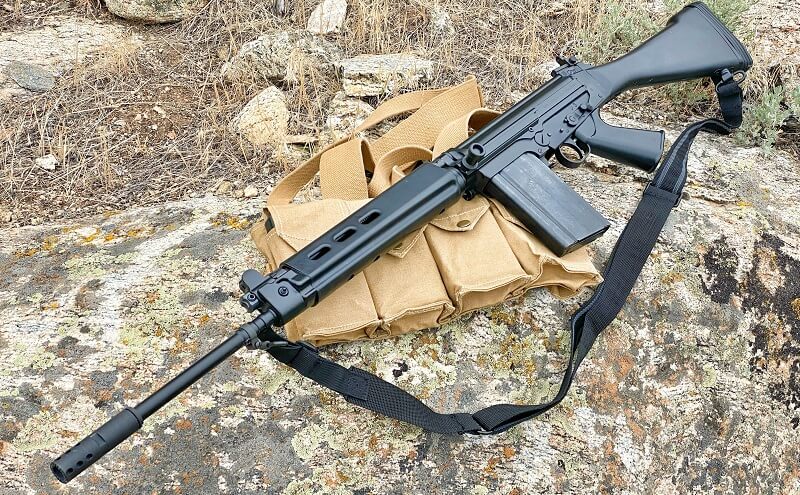
DS Arms produces a faithful American-made FAL called the SA58.
The Right Arm of the Free World.
GET OUR FREE WEEKLY NEWSLETTER
Keep in mind that 1953 was the early stages of the Cold War; NATO versus the Soviet Union and Communist China. NATO initially agreed that that standard rifle cartridge for allied infantrymen would be the 7.62x51mm NATO. Fabrique Nationale produced the FAL in that caliber and it was rapidly adopted by numerous NATO countries. Their allies fighting against the evils of communism also adopted the rifle. Therefore, the rifle became known as the Right Arm of the Free World.
Of course, the United States had to be different and adopt the M-14. The Germans built the G3 based upon improvements made from the original CETME rifles. Despite that competition, the FAL in its various forms is arguably one of the most popular 7.62 NATO battle rifles ever. I know some folks who will heatedly assert that it is the #1 fighting rifle in that chambering.
It is not surprising that the FAL would find its way from Europe down to Africa and across the Atlantic ocean to Central and South America. There are many stories to tell about the history of the FAL. The one on which I would like to focus is the Rhodesian Bush War.
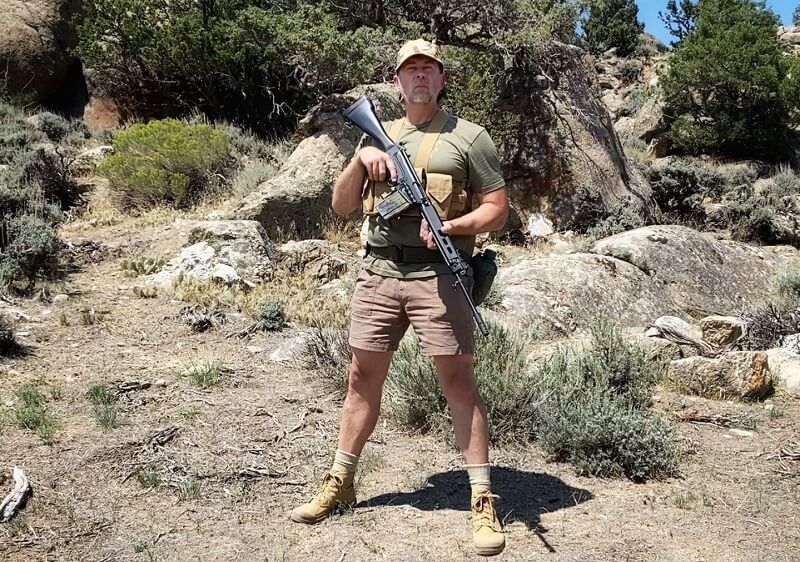
Real men wear shorts.
The Rhodesian Bush War and the FN Fal.
We will consider the Rhodesian Bush War as this conflict was likely the one which made the FAL, or R1 as it was known in South Africa, a household word for gun people. NATO countries issued the FAL all over Europe, but the Rhodesian Light Infantry arguably engaged in combat with these rifles more than most anyone else in the world. Yes, I will acknowledge that the UK used them in Northern Ireland and the Falkland Islands.
First off, we must acknowledge that the FAL, whether Belgian or South African made, was not the only rifle used by the Rhodesians and their allies. Portugal, who was one of the few open supporters of Rhodesia, was armed with H&K G3 rifles, many of which found their way into the Bush War. Also, as most NATO countries turned their backs on Rhodesia, thanks in large part to the cowardly British, Rhodesian troops could not be too picky.
All that being said, the FAL was the official standard issue infantry rifle for the Rhodesian Light Infantry, Reserve units and others. The famous Selous (pronounced səˈlu) Scouts used the FAL but were also as likely to use AK’s as they made raids against the communists guerrillas hiding in the various border countries.
While many Americans view the 7.62 NATO or .308 Winchester as a long distance round, during the Bush War, Rhodesian troops became experts at employing their rifles in close quarters. Historical reports of battles showed that most engagements took place at what we would call close range, 100 meters and closer. The 7.62 NATO was not a long range round. It was a close-range sledgehammer.
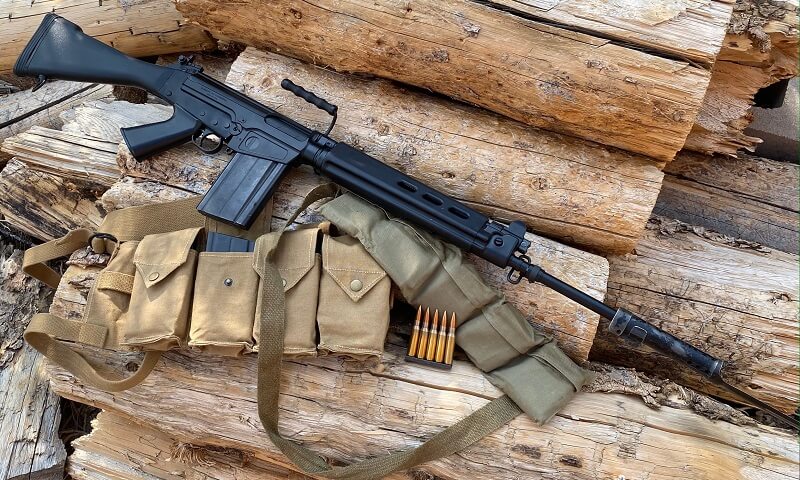
The SA58 from DS Arms, a Rhodesian chest rig and ammo bandolier.
SA58 from DS Arms.
FN Herstal officially stopped making the FAL in Belgium in 1988. Therefore, original Belgian-made rifles are in high demand and hard to come by. This is particularly because the military versions were select-fire with a full auto option. All of the literature I have read indicates that soldiers in the field rarely used the full-auto selection. For two reasons this is the case. #1: Unless they were on a bipod, the rifles were difficult to control. #2: Being magazine fed, the standard 20 round and even the rare 30 round mags ran dry too fast.
If you want to own an original design FAL rifle today and live in the United States, your best bet is to buy the SA58 from DS Arms. The SA58 is a faithful metric reproduction of the Belgian rifle. It uses the same magazines and parts as the original. Yes, there are “Imperial” or “Inch pattern” FAL rifles made in the UK and Canada, but let’s stick with metric which the R1 was based upon.
The rifle featured herein is the DS Arms “Bush Warrior”, the closest new model to the firearm used in the Bush War. Let’s take a moment to consider the gun’s specifics.
Standard Configuration for the Fal Includes:
My SA58 from DS Arms.
As you look closely at the rifle I have here, you will notice a couple of unusual features. On the right side of the receiver you will notice a one-inch hole punched into it. This is an homage to the South African rifles that were “sterilized” by removing the SA Lion Crest before being sent over the border. The South Africans openly supported the Rhodesians for basically the first half of the war and then not so secretly supported them to the end.
Also, on the front you will see a FAL rifle grenade sight that replaced the factory gas block. During the Cold War, armies were still using rifle-launched grenades propelled by blank cartridges. When the grenade sight is up, the gas port is closed and all of the gas goes out the muzzle, not back into the action. It was a simple and ingenious design.
Other than the two personal touches on my rifle, the DS Arms “Bush Warrior” you see here is the same rifle you can order. That is, you can buy one if you are a free man, not a slave to a criminal regime (CA, MA, NY, etc).
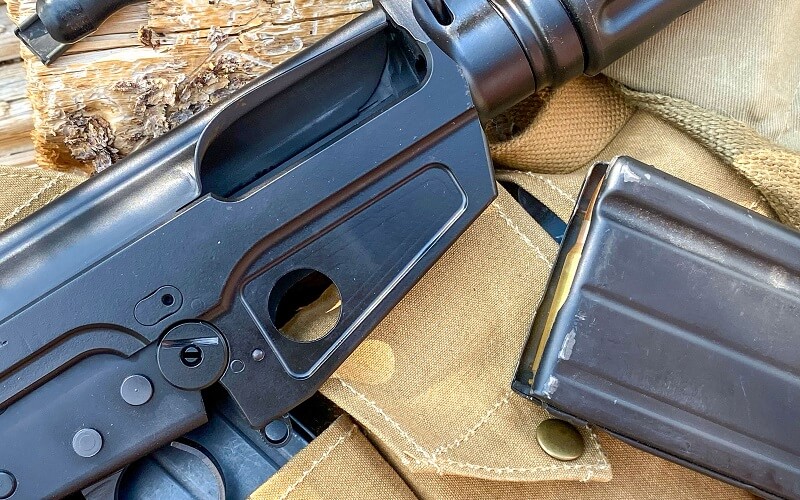
The sterilization hole is an homage to the original South African R1 rifles used in the Bush War.
Range Time with the Fal.
As this is a fighting rifle and I wanted to feed it with fighting ammunition. The normal .308 Winchester that you buy from your local sporting goods store will work in the gun, however, I wanted the real deal. Shortly after I ordered the rifle from DS Arms, I received an email notifying me that they had “Hirtenberger” 7.62x51mm NATO ammunition in green ammo cans packed in bandoliers on stripper clips. This is the 147 grain FMJ ammunition that is made for the FAL, the G3, and other battle rifles of the time. The Hirtenberger is rated at 2751 feet per second with 2428 foot pounds of energy. It is this ammunition that the Rhodesian Light Infantry used as a sledgehammer against the communist rebels.
Before hitting the range I followed the owner’s manual and stripped down the rifle for basic field maintenance. The FAL requires no tools for end-user cleaning as you would expect from such a gun. I applied EDC CLP to the bolt, carrier, and moving parts and put it back together.
How the Fal Shot.
A hundred plus rounds into the review and I have experienced no stoppages or failures from the rifle. Yes, I will be shooting it more, but in our modern world, however, 1000 round torture tests are extremely costly and potentially foolish. Have you priced a 1000 rounds of .308 lately?
When I put the rifle on paper at 100 yards, I found that from a rest, my shots were clustering in 2 inch groups using the standard iron sights. From the factory, at that distance, my groups were about 3 inches left of center. The rear sight is adjustable for both elevation and windage so I added a few clicks right.
For those who think a 7.62 NATO rifle is going to “beat them up”, fear not. Felt recoil is naturally more than your favorite .223 AR, but it is not a killer. Put the stock into your shoulder, lean into it and you will be fine.
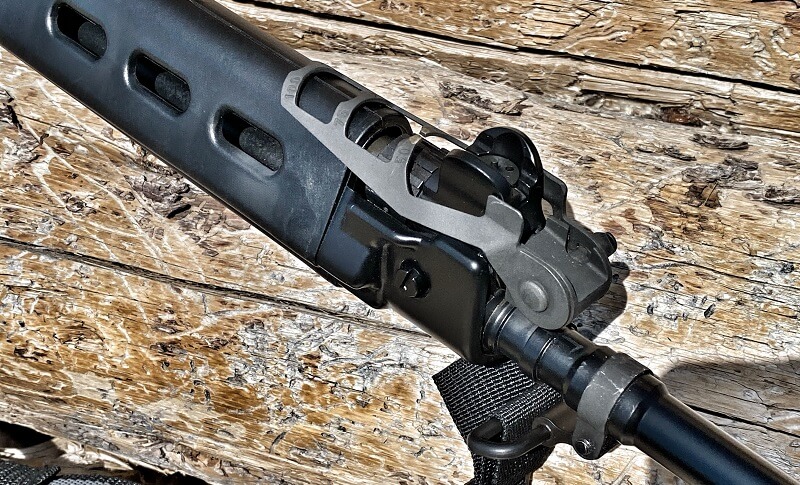
The Rhodesian FAL rifles were equipped with sight to launch rifle grenades.
Bonus Gear.
My friend at DS Arms recommended SARCO for FAL accessories. I visited their site and found a Rhodesian surplus ‘socket’ style bayonet as well as some Rhodie FN metric magazines. The magazines are “used/in good condition” and have remnants of the famous “baby poop” brush stroke camo paint. The bayonet clamps onto the Bush Warrior muzzle device and even has gas vents to coincide with the rifle.
Speaking of “baby poop” camo paint however, I know many of you are upset that I have not yet put the world’s ugliest camouflage job on my rifle. Bear in mind that the Rhodesian Light Infantry did not start painting their guns until later on in the war. The initial guns were factory black. Nonetheless, I do indeed have plans to paint the gun using the same method that the soldiers in Rhodesia did back in the 1970’s. But that, dear reader, will be for another time.
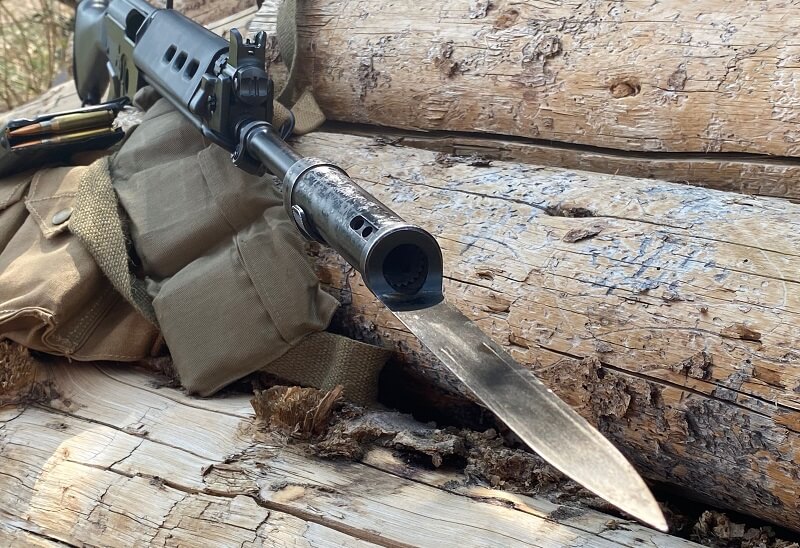
A Rhodesian surplus “socket” type bayonet completes the package.
Professor Paul Markel
Latest posts by Professor Paul Markel (see all)
- Tactical Masturbation: Top 3 Stupid Human Tricks - July 8th, 2024
- Blood Trail: Fearless Fiction - June 21st, 2024
- SOTG and SB Tactical Celebrate Brace Ruling - June 20th, 2024
- Shotgun Accessories: Practical and Useful - June 14th, 2024
- Tactical Rifle Tips: Transition Drills - January 5th, 2024






I bought my FAL/LAR from the Gun Club at Torrejon AB in Spain in the early ’80s. It sported a “Match Grade” barrel. I took it out to their 100 yd range to sight it in. The targets they used were 6 inch black circles that I could barely see from 100 yds. I loaded a 20 rnd mag and sent 10 rnds downrange. Using the standard peep sight, I couldn’t see any spots in the white paper surrounding the bullseye and hoped that I might have nicked the paper so I could adjust the sights. When I walked down to retrieve the target, you can imagine how surprised I was when all 10 were in the black! I can only attribute that degree of marksmanship to the match grade barrel, as my own skill at arms could only achieve that with practice and familiarity.
The Baobab front sights on the R1 completely cover a man at 100 yards. In fifteen minutes with a fine file you can profile them to be more effective. Also, the C type r1 bayonet will NOT fit the German or Austrian guns